Dido › Third Punic War » Ancient origins
Articles and Definitions › Contents
- Dido › Who Was
- Third Punic War › Antique Origins
Ancient civilizations › Historical and archaeological sites
Dido › Who Was
Definition and Origins
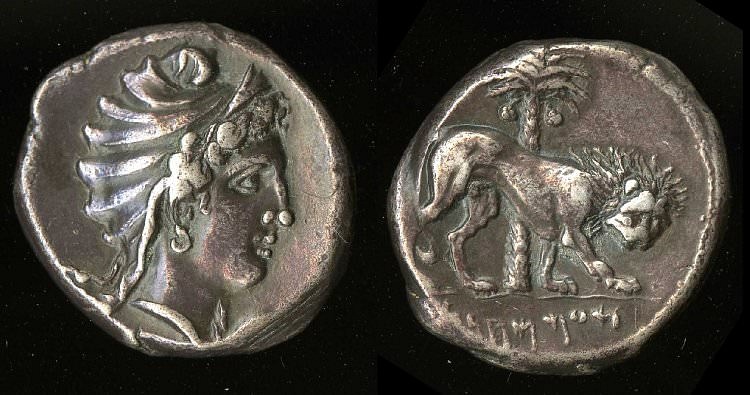
Queen Dido (aka Elissa, from Elisha, or Alashiya, her Phoenician name) was a legendary Queen of Tyre in Phoenicia who was forced to flee the city with a loyal band of followers. Sailing west across the Mediterranean she founded the city of Carthage c. 813 BCE and later fell in love with the Trojan hero and founder of the Roman people Aeneas. The tale of Dido is most famously recounted in Virgil ’s Aeneid but she appeared in the works of many other ancient writers both before and after.
DIDO & PYGMALION
The earliest surviving mention of the founding myth of Carthage appears in the work of Timaeus of Taormina, a Greekhistorian (c. 350-260 BCE) whose original texts do not survive but which are referred to by later authors. Timaeus was the first to present the foundation of Carthage as occurring in either 814 or 813 BCE. An additional source on the historical Elissa is Josephus, the 1st century CE historian, who quotes Menandros of Ephesus ' list of 10th-9th century BCE Tyrian kings, which includes mention of an Elissa, sister of Pygmalion (Pumayyaton), who founded Carthage in the seventh year of that king's reign.
The most famous version of the Dido story, though, is found in Virgil's Aeneid. The 1st-century BCE Roman writer describes Dido as a daughter of Belus, the King of the Tyre in Phoenicia. We are told that her Phoenician name was Elissa but the Libyans gave her the new name Dido, meaning 'wanderer'. Virgil recounts that Dido's brother, Pygmalion, cheated his sister out of her inheritance and then, in order to keep the throne of Tyre, killed Dido's husband Sychaeus. In another version, Dido married Acherbas (Zakarbaal), her uncle and priest of Melqart (or Baal) who was similarly executed by Pygmalion to acquire his wealth. Dido then fled the city with a loyal following (which included the military commanders Bitias and Barcas) and a hoard of the king's gold to sail west and a new life.
THE QUEEN'S PHOENICIAN NAME WAS ELISSA BUT THE LIBYANS GAVE HER THE NEW NAME DIDO, MEANING 'WANDERER'.
FOUNDATION OF CARTHAGE
Dido's first stopping point was Kition on Cyprus, where she picked up a priest of Astarte after promising him that he and his descendants could be the High Priest at their new colony. A group of 80 young women, prostituted there in the name of Astarte, were taken along too, and the whole group sailed for North Africa where they founded their new city. Initially, the colonists were helped by the nearby Phoenician colony of Utica, and the local Libyan people (led by King Hiarbas) were willing to trade with them and offered to rent a piece of suitable land. The condition was that they could only have the area of land covered by an ox-hide. The resourceful Dido had the hide cut into very fine strips and with these encircled a hill which, in time, became the city's citadel and known as Byrsa Hill after the Greek word for ox-hide.
The name of this new settlement was Qart-hadasht (New Town or Capital), and its location on a strategically advantageous position on a large peninsula of the North African coast was selected to offer a useful stopping point for Phoenician maritime traders who sailed from one end of the Mediterranean to the other.
Archaeological finds of Greek pottery and the remains of housing dating to the mid-8th century BCE suggest already the presence of a large settlement and so confirm at least the possibility of the traditional founding date. Phoenician cities had already founded colonies around the Mediterranean, and so Carthage was by no means the first, but in a relatively short time, it would become the most important, go on to found its own colonies and even eclipse Phoenicia as the most powerful trading centre of the time. Carthage's prosperity was based not only on its location on trade routes but it also benefitted from an excellent harbour and control of fertile agricultural land. In honour of their founder Carthage minted coins from the 5th century BCE, and some have identified the female head with Phrygian cap seen on many of them as representing Dido. Some Roman writers suggest that Dido was deified, but there is no archaeological evidence from the Carthaginians themselves that this was so.
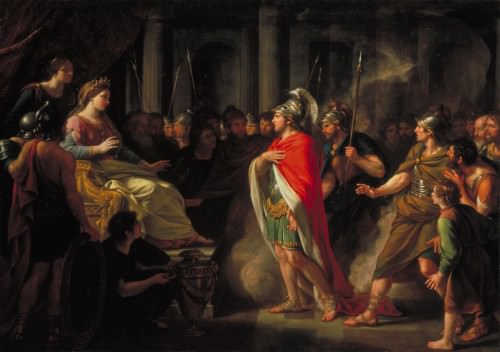
The Meeting of Dido and Aeneas
DIDO & AENEAS
Roman writers, perhaps starting with the 3rd century BCE poet Naevius in his Bellum Poenicum, have Dido meet the Trojan hero Aeneas, who would found his own great city: Rome. In the myth of Rome's founding father, Aeneas came to Italy after the destruction of Troy at the end of Trojan War. This was four centuries prior to the founding of Carthage, so it is, therefore, chronologically impossible the two did meet if indeed they ever existed anyway. Virgil then follows with his own take on the myth in his Aeneid in what has become the classic version of the story. He informs us that Aeneas is blown off course in a storm but is directed by Venus to land at Carthage. Dido had been resisting a long line of suitors ever since her husband was murdered back in Carthage, but when she was struck by Cupid's arrow at the command of Venus, she fell in love with the hero. Once, separated from their entourage in a storm, the two make love in a cave. Unfortunately, the romance is short-lived for Mercury, sent by Jupiter, then prompts Aeneas to leave his love and continue the voyage which will fulfil his destiny as Rome's founder. When the Trojan resists Dido's calls to stay and sails away, it is then that the queen throws herself on a funeral pyre, but not before she pronounces a terrible curse on the Trojans, thus explaining the inevitability of the brutal Punic Wars between Carthage and Rome:
Let there be no love between our peoples and no treaties. Arise from my dead bones, O my unknown avenger, and harry the race of Dardanus with fire and sword wherever they may settle, now and in the future, whenever our strength allows it. I pray that we may stand opposed, shore against shore, sea against sea and sword against sword. Let there be war between the nations and between their sons for ever. (Bk. IV: 622-9)
According to another tradition, earlier than Virgil, Dido was forced to marry the Libyan king Hiarbas. To avoid this arrangement Dido built a large fire as if she were about to make an offering but then threw herself into the flames. It is also interesting to note that in Virgil's version Dido is given a sympathetic portrayal and this perhaps reflects the Augustan age when Carthage, no longer the hated enemy of previous centuries, was being rehabilitated into the Roman Empire.
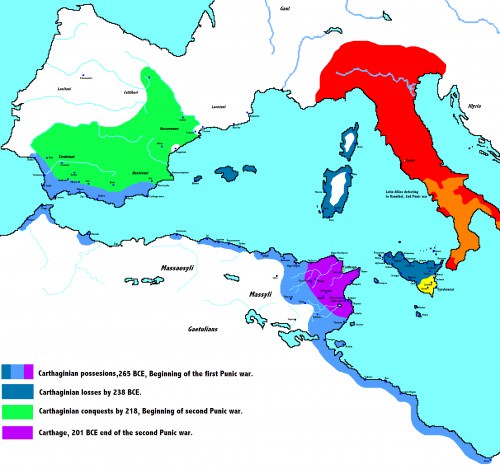
Carthage during the Punic Wars
LEGACY
The legend of Dido became popular with later writers such as Ovid (43 BCE – 17 CE), Tertullian (c. 160 – c. 240 CE), the 14th-century authors Petrarch and Chaucer, and she appears as a central figure in the operas of Purcell ( Dido and Aeneas ) and Berlioz ( Les Troyennes ) amongst others. A female leader was exceptionally rare in ancient reality and mythology, and so Dido has captured the imagination for millennia. As the historian D. Hoyos summarises, 'The romantic and dramatic story of Elissa quite possibly rests on a basic historical reality, even if efforts to treat all its details as sober fact should be avoided' (12).This position is supported by MEAubet, 'there are too many coincidences between the eastern and the classical sources to allow us to think that the story of Elissa had no historical basis' (215).
Third Punic War › Antique Origins
Definition and Origins
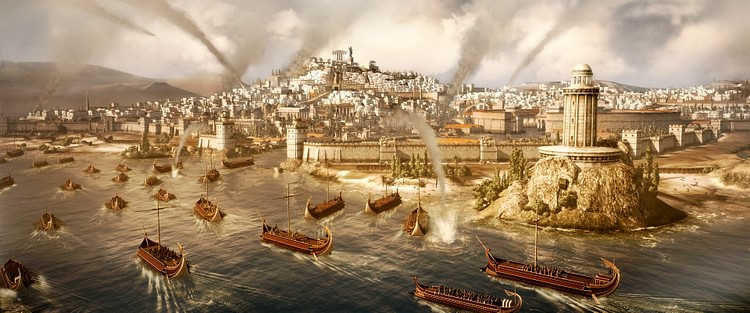
The Third Punic War was fought between Carthage and Rome between 149 and 146 BCE. Carthage had already lost two wars against Rome, but their assault on their Numidian neighbours gave the Romans the perfect excuse to crush this troublesome enemy once and for all. As Cato declared in the Senate, 'Carthage must be destroyed'. After a lengthy siege, the city was finally sacked and the Carthaginians were sold into slavery. One of the greatest powers in the ancient Mediterranean had been wiped off the map.
CAUSES OF THE WAR
Carthage had lost the First Punic War (264-241 BCE) and control of Sicily, then again it had been defeated in the Second Punic War (218-201 BCE) and so lost its Spanish empire, its fleet, and independence of military action. In both wars, the Carthaginians had also been made to pay Rome massive reparations. Nevertheless, Carthage recovered from the Second Punic War relatively quickly and coins and trade goods from this period have been found across the Mediterranean (even in the Balkans) which attest to the city's prosperity based on trade. Carthage kept on friendly terms with Rome too, declaring their great general Hannibal - Roman enemy No. 1 - an exile when he fled to the court of Antiochus III. The city became an important source of grain and barley for Rome too; they managed to regularly pay the reparations from the Second Punic War, and even gave military assistance to Rome's campaigns elsewhere.
As the second century BCE wore on, though, the Carthaginians gradually became more aggressive in their demands for control of their own destiny. Carthage sorely resented the loss of its territory to Numidia under the rule of Masinissa. The Numidians had been steadily expanding their territorial control so that ultimately they acquired around half of Carthage's territory as it had stood in 200 BCE. The Carthaginians responded to an attack on Oroscopa by sending an army of 31,000 men to fight the Numidian king in 150 BCE. Carthage's campaign was a disaster and their army was annihilated, but Rome now had the perfect excuse to finally crush its old enemy once and for all, sack Carthage, and take some easy war booty.Such figures as Marcus Porcius Cato (Cato the Elder), who had seen for himself Carthage's resurgence during a diplomatic visit in 153 BCE, persistently demanded in the Roman Senate that as the Carthaginians had waged war without Roman permission, and worse, had done so against an ally of Rome, 'Carthage must be destroyed'. The Third Punic War was about to begin.
'CARTHAGE MUST BE DESTROYED'
CATO THE ELDER TO THE ROMAN SENATE.
CATO THE ELDER TO THE ROMAN SENATE.
ROME DECLARES WAR
The Carthaginians sent envoys to Rome to explain their actions and grievances against Masinissa, but they were rebuffed.Many senators had been pushing for military action against Carthage for the last two or three years, and now seemed the final straw. Then, an important development may have persuaded the more cautious members of the Senate. Seeing the writingon the wall, Utica, perhaps wisely, defected to the Roman cause. A long-time ally of Carthage, the city would provide a good harbour for a Roman invasion force just one day's sail from Carthage. In 149 BCE the Senate continued a charade of diplomacy by asking for 300 Carthaginian noble children as hostages but then revealed its true intentions by finally declaring war for a third time on Carthage. An army of up to 80,000 infantry and 4,000 cavalry was dispatched to North Africa.
The Romans first demanded of Carthage an unconditional surrender under which terms they were to disband their army, hand over all arms, and release all prisoners. On top of that and perhaps indicating Rome's intentions to destroy Carthage no matter what happened, the Carthaginians were told to leave Carthage completely and resettle in another place not closer than 16 kilometres to the coast. Carthage, now with nothing much to lose, decided to make a stand. Slaves were released from the city and a Carthaginian army of 30,000 recalled from the Numidian border. The city and its population of 200,000 prepared for what would be a three-year siege.
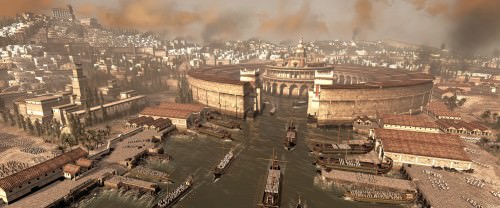
Carthage and its Harbour
CARTHAGE BESIEGED
The Roman force was led by the consuls Marcius Censorinus and Manius Manilius but the first engagements did not go well, and Carthage, with its massive fortifications, resisted the Roman siege on the city. Carthage had some 34 kilometres of defensive walls to shelter behind, parts were built in a triple defensive line while other sections were protected by palisades, ditches, and the sea. They resisted everything the Romans could throw at them. More importantly, the Romans were unable to completely blockade the port where merchant vessels still managed to resupply the city. On top of that, the Carthaginians sent out sorties to counter-attack, including fire-ships which set the Roman fleet ablaze. They managed in another raid to destroy some of the Roman siege engines, and then an epidemic hit the besiegers in the long hot summer of 148 BCE.
Meanwhile, the Carthaginian army was remaining a stubborn resistance in the countryside. The city of Hippacra refused to surrender against sustained Roman attacks led by the consul Piso, and even the Numidians, under a new king Bithyas, sent 800 cavalry to join the Carthaginian land army. The Romans had hoped for a quick and easy capitulation, but it was beginning to look like the Third Punic War might grow to the epic proportions of the previous wars.
More drastic measures were needed and taken in 147 BCE when the Romans, now commanded by the young and able consul Publius Cornelius Scipio Aemilianus, built a better siege wall around Carthage and its harbour, including a mole on the south side of the city. This latter structure would block the single access to Carthage's mercantile harbour which led in turn to the large circular inner naval harbour. At last, Carthage could no longer be supplied by sea. In desperation, a small Carthaginian fleet twice tried to break the blockade by sailing through a newly made second exit to the harbour but both times they were forced to retreat.
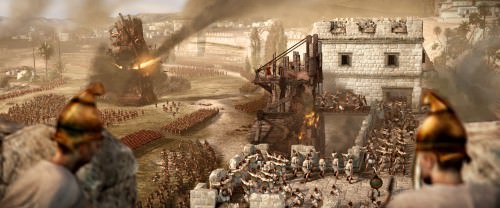
Siege of Carthage
Scipio then systematically attacked the walls near the harbour using the mole as a base. The Carthaginians responded by attacking and burning some of the Roman siege engines, but Scipio persisted and managed to take control of the new entrance dug by the Carthaginians. Once more the city was totally cut-off, and Scipio was making the siege seem a whole lot easier than his predecessors had done. The Carthaginian army was hemmed in at Nepheris, 25 kilometres south of Carthage, and unable to aid the city. In the winter of 147/146 BCE Scipio felt confident enough to leave Carthage choking from his stranglehold and defeated the army at Nepheris after a three-week siege.
CARTHAGE DESTROYED
The final Roman hammer blow came in the spring of 146 BCE when they launched an all-out attack on Carthage. Again, the harbour area was selected as the point of entry, and this time, the Romans broke through the defences and slowly advanced through the city. After seven days of brutal street-fighting and much time-wasting looting by ill-disciplined legionaries, only the citadel remained to be taken. Here the Carthaginian commander Hasdrubal and 900 desperate Roman deserters held out in the temple of Eshmun. They could expect no mercy, and Hasdrubal's torturing of Roman prisoners on the battlements earlier in the battle, even if done to steel the resolve of the Carthaginians, must now have been regretted. As the Roman assault gained ground, Hasdrubal gave himself up but, in shame and outrage, his wife threw herself and her two children onto the massive funeral pyre onto which the last remaining soldiers also committed themselves. Carthage had finally fallen.
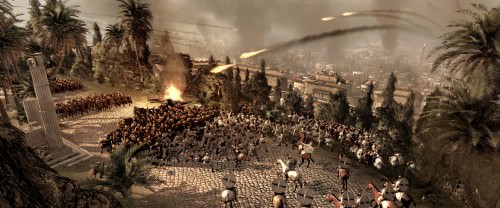
Carthage Under Siege
All of the inhabitants were enslaved and the city utterly destroyed (the myth that the land was then spread with salt to prevent resettlement is a later invention). A curse was then set on any person who attempted to resettle the area. North Africa was then made a Roman province while those cities who had been loyal to Rome, such as the new capital Utica, were given the privilege of freedom from tax. For his exploits, Scipio became Cornelius Scipio Aemilianus Africanus (known later as Scipio Africanus the Younger to distinguish him from his namesake grandfather, Scipio Africanus the Elder ) and was awarded a triumph in Rome.
Carthage would remain uninhabited until the city was re-founded by Julius Caesar and further encouraged by Augustus a century later. As history is written by the victors, the Punic culture was persistently bashed and maligned by generations of Roman writers, but it remained remarkably resilient, as did the Punic language, in the countryside and smaller settlements of North Africa long after the Punic Wars had robbed it of its figurehead city.
See other Related Contents ››
LICENSE:
Article based on information obtained from these sources:with permission from the Website Ancient History Encyclopedia
Content is available under License Creative Commons: Attribution-NonCommercial-ShareAlike 3.0 Unported. CC-BY-NC-SA License